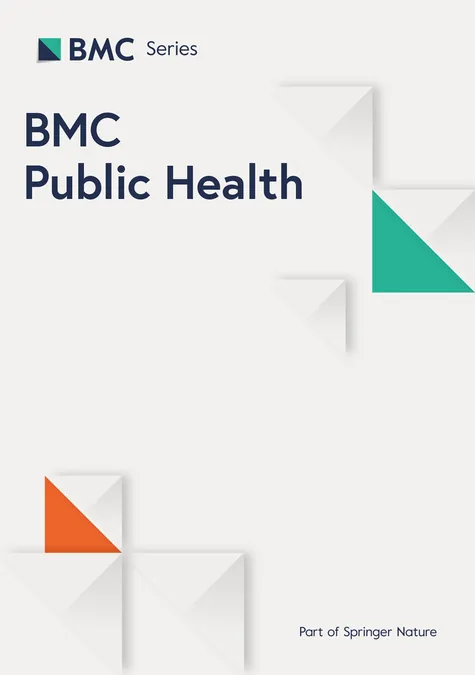
Uncovering the Hidden Link: Perceived Stress and Primary Dysmenorrhea in Brazilian Women
2025-04-05
Author: Wei Ling
Menstrual health and its importance
Menstrual health is a vital aspect of overall well-being for women, significantly influencing their physical, mental, and social lives. Many women face various symptoms related to menstruation, including dysmenorrhea (painful periods), fatigue, back pain, and psychological issues such as mood swings, anxiety, and exhaustion.
Understanding Primary Dysmenorrhea
Primary Dysmenorrhea (PD) manifests as pelvic pain that can radiate to the lower back and thighs, typically surfacing before or during menstruation and arising without any underlying pelvic disease. Studies indicate that women under 25 are particularly susceptible, with nearly two-thirds of Brazilian women reporting menstrual pain during their recent cycle. Strikingly, one-third of them noted that such symptoms hindered their daily activities, leading to absenteeism from work and studies.
Though the psychological aspects of PD have not been deeply explored, existing research suggests a noteworthy association between PD and stress, anxiety, and depression. Insight into how stress impacts menstrual-related pain is limited, especially in Brazil, where cultural stigmas around menstruation can hinder women's discussions about their experiences.
A Groundbreaking Study on the Connection Between Stress and PD in Brazil
To tackle this gap, recent cross-sectional research conducted from December 2022 to June 2023 sought to evaluate the relationship between perceived stress and PD among Brazilian women. Using comprehensive methods—including surveys that collected sociodemographic details and validated pain assessment scales—the study encompassed a diverse group of 2,505 women.
Significant Findings Revealed
Participants were generally young, with a mean age of 28.8 years. Their average perceived stress score was recorded at 28.8, indicating moderate stress levels correlating with the intensity of their menstrual pain, which averaged 5.1 on a pain scale. Disturbingly, findings highlighted that women with moderate to severe PD were 2 to 2.5 times more likely to report elevated stress levels.
The influence of pain not only affected physical well-being but also had substantial interference with mental and social activities. Over one-third of participants reported moderate interference, while nearly half indicated slight disruption. Those facing greater activity challenges due to PD showed higher levels of perceived stress.
Exploring Age and Menarche's Influence
Interestingly, demographic factors contributed significantly to perceived stress levels. Younger women, particularly those between 18 and 29, were notably more susceptible to experiencing both PD and higher stress. Furthermore, the age at which menstruation begins (menarche) also played a role; women who began menstruating later showed reduced stress levels. These findings underline the need for a more nuanced understanding of how age and psychosocial factors intersect.
The Biological Basis of the Stress-Pain Connection
The biological link between stress and PD can be observed through the body’s neuroendocrine responses during stressful periods. Stress triggers hormonal changes influencing follicle and progesterone development, potentially enhancing pain sensitivity during menstruation.
Implications for Future Research and Women's Health Policies
This groundbreaking study not only sheds light on the significant association between perceived stress and PD among Brazilian women but also signals the need for a strategic shift in research and healthcare. Prioritizing stress management could lead to enhanced treatment efficacy for PD. Future studies are encouraged to explore pain-relief interventions that also consider the emotional and psychological dimensions of menstrual health.
Moreover, implications for public health policies are profound. Addressing stress as a factor influencing PD emphasizes the necessity for integrated healthcare approaches that foster open communication and comprehensive care plans. Such initiatives can significantly improve the quality of life for women struggling with PD and enhance broader public health strategies focused on women’s health.
Conclusion
In summary, this study marks an essential step toward understanding the complexities of menstrual health, pushing for more significant attention to both the physical and emotional aspects of Primary Dysmenorrhea in women.

 Brasil (PT)
Brasil (PT)
 Canada (EN)
Canada (EN)
 Chile (ES)
Chile (ES)
 Česko (CS)
Česko (CS)
 대한민국 (KO)
대한민국 (KO)
 España (ES)
España (ES)
 France (FR)
France (FR)
 Hong Kong (EN)
Hong Kong (EN)
 Italia (IT)
Italia (IT)
 日本 (JA)
日本 (JA)
 Magyarország (HU)
Magyarország (HU)
 Norge (NO)
Norge (NO)
 Polska (PL)
Polska (PL)
 Schweiz (DE)
Schweiz (DE)
 Singapore (EN)
Singapore (EN)
 Sverige (SV)
Sverige (SV)
 Suomi (FI)
Suomi (FI)
 Türkiye (TR)
Türkiye (TR)
 الإمارات العربية المتحدة (AR)
الإمارات العربية المتحدة (AR)